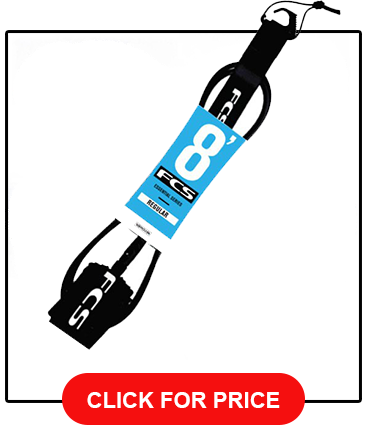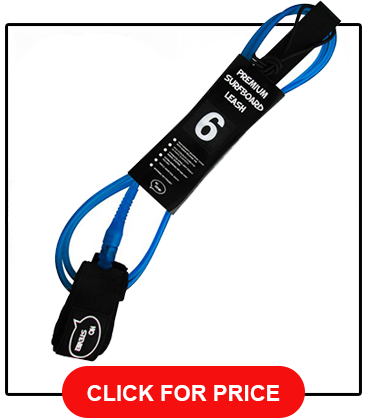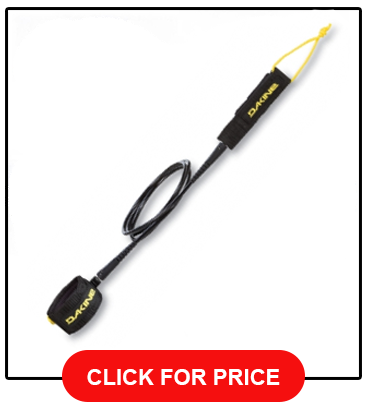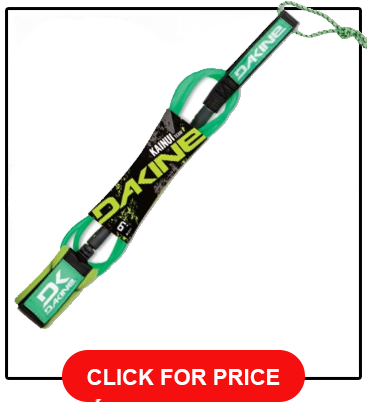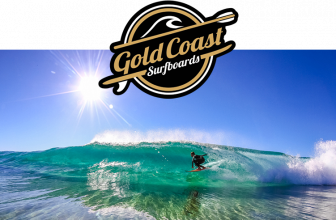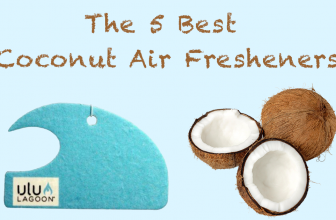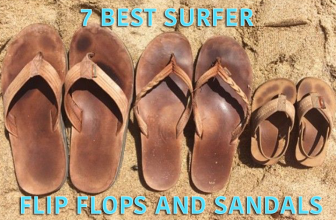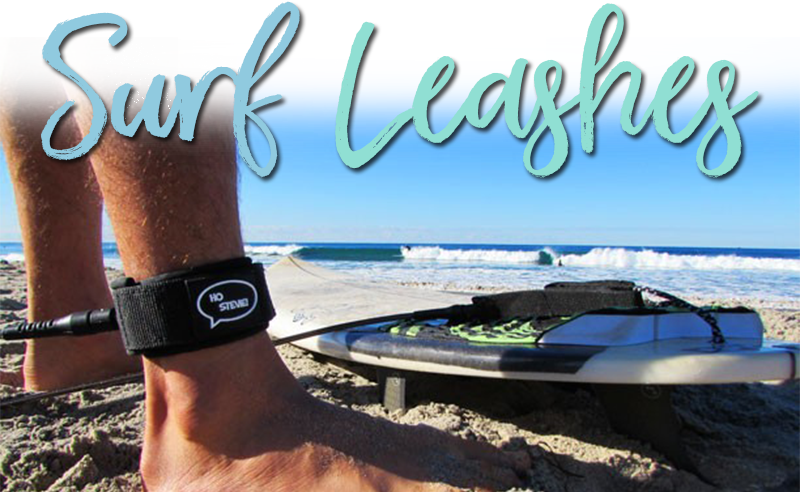
There are quite a number of factors that you should consider when looking to pick up your next surfboard leash that you may have never thought of...
More...

...First off, and most importantly, you’ll want to make sure that your leash is as long as your board so that when you wipeout, there is no guarantee that your board will snap back and give you a good whacking.
With a short leash, you’ll find yourself going one-on-one with your board quite often.
If you’re new to surfing, meaning you’ll most likely be falling often, get a leash that is at least a foot longer than your board.
If you’re experienced and looking for better control, a shorter leash will do the trick.
For the crazy big wave surfers out there, the longer the leash the better.
With an array of features such as swivels, cuffs, and rail savers on top of length, it is no wonder why most people don’t buy the optimal leash their first time around.
Luckily, we’ve compiled a great variety of our favorite surf leashes for you so you can get out in the water without worry, read below!
The 6 Best Bets
#1 Choice - FCS Premium Regular Surfboard Leash
5 Star Editorial Review
This premium surf leash, made with ultra-strong polyurethane to provide stretch and elasticity, will not snap and leave you stranded out in the water!
Designed and manufactured in the US, this leash is great for the day-to-day performance surfer. The leash comes in 6 foot, 7 foot, and 8-foot sizes for anything from competition to big wave surfing.
This leash should only be used with shorter boards!
It is engineered with a smooth rotating nylon cuff and rail saver swivel assembly that will keep the cord from wrapping around your legs, as well as keep the rail of your board from getting worked.
The deluxe padded high-density neoprene ankle strap with soft Lycra edging is very comfortable and won’t slide up and down your ankle.
There is nothing worse than an ankle rash after a beautiful day out in the waves. Lastly, store your key in the internal key pocket near the ankle.
BPS 'STORM' Surfboard Leash
From the manufacturers over at BPS, the STORM Surfboard Leash is a bullet proof – and very comfortable – surf or SUP leash with choices ranging from 5 feet to 10 feet.
It also comes at an incredibly inexpensive price! The embroidered collar on the cuff is very comfortable and even comes with an old school key pocket.
This leash can definitely handle some gnarly sends. The leash will not kink at all and even provides a bit of drag when it hangs off the back making catching waves a bit easier.
With a super high strength 7.2mm urethane cord, max strength double stainless steel swivels, and a triple wrap rail saver with precision molded fittings, this leash is high beyond high quality.
The great thing is, you can buy with total confidence as the leash comes with a complete 100% money-back guarantee if it breaks or doesn’t work like it is supposed to.
Nothing better than seeing a company so confident in their product!
Ho Stevie! Premium Surf Leash
Grab yourself a tangle-free Ho Stevie Premium Surf Leash at an incredible price. The leash comes in 5 feet, 8 feet, or 9 feet, depending on the color you choose.
Tested in pumping waves, the Ho Stevie won’t let your board go crashing to the shore without you.
It is built to last with a maximum strength, ultra-lightweight 7.2mm cord, double stainless steel swivels, and triple wrap rail savers.
The 1.5in ankle cuff provides a high-density neoprene comfort that will stay secure on your ankle. There’s even a pocket in the ankle cuff to store your key while surfing.
They even say that if you don’t like their product, you can return it in 30 days!
This leash provides comfort, durability, and utility. It is truly a great leash for the avid surfer.
Dakine Kainui Surfboard Leash
Dakine Surfboard Leashes are some of the highest quality leashes out there.
Thicker than most leashes, the ultra heavy-duty 5/16in duracord on the Kainui model is very durable and is perfect for surfing in waves that are a couple feet overhead.
If you’re concerned about drag though, this might not be the best leash for you.
The durable 1/4in neoprene ankle strap padding is a very nice touch that will you leave you feeling very comfortable throughout a day of surfing.
The marine-grade stainless steel double swivel is a very reliable and long lasting feature that will assure leash alignment on the wildest of rides.
These leashes come in a 10-foot size that will keep you riding big!
Dakine Kainui Team Surfboard Leash
The Kainui Team Surfboard Leash is a bit different than the regular Kainui, though is also perfect for surfing waves that are a couple feet overhead.
The design of this leash shows why Dakine has been one of the top surfing brands for many decades.
The 6-foot, 7-foot, or 8-foot x 1/4in cord is designed for maximum strength and minimal drag.
They even redesigned the leash ends with an opti-flex character that gives it ultimate durability.
Like the original Kainui, though a big bigger, the 1.5in molded neoprene ankle cuff is super comfortable and will stay snug around your ankle throughout the day.
With marine-grade stainless steel swivels, a posi-lock hook and loop closure, and a 1in detachable rail saver, there is no question that this is a leash built for the pros!
FCS Surf Leash
The FCS Surf Leash is a very well tested and highly trusted leash that is excellent for the day-to-day surfer.
This competition leash, ideal for smaller conditions by minimizing drag, has an ultra durable polyurethane cord that provides the right amount of stretch to keep your board by you at all times without the fear of snapping.
The deluxe padded ankle strap is very comfortable and the modular rail saver will keep you from tearing up the rail of your board.
The hidden key pocket, a common feature throughout, is a great little add-on.
Available in 6 feet, 7 feet, and 8 feet, as well as an array of colors, you are sure to find the right leash that fits your style and preference.
How To Choose a Surfboard Leash
Choosing the proper surfboard leash is necessary if you don’t ever want to find yourself swimming back to shore without your board after a long day out in the waves.
There are different pieces that go together to construct a surfboard leash and each with their own functionality that can change how you surf and how safe your surfing is.

Cuff
In terms of looking for a proper cuff, many companies have started to manufacturer to a standard these days.
It seems that people love the double-wrap around Velcro design, as it is much safer and more secure than a single. You’ll also typically see cuffs with small pockets to put your keys in.
This is awesome if you are someone that has to drive out to the ocean and doesn’t have anywhere to put their keys when they paddle out.
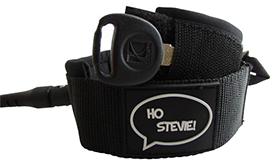
Swivel
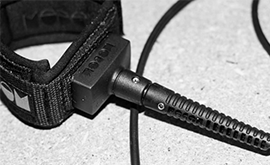
Next off, you’ll want to make sure you have a swivel that suits your needs. Most modern leashes are being manufactured with swivels and double swivels.
These allow the cord to spin and twist around without following the surfer. The intention is to keep the cord from tangling and tripping the surfer.
If you come up against a brand that doesn’t offer a swivel, we wouldn’t recommend that.
Cord
The actual cord is probably the most important part of your leash. Modern cords are most all made out of polyurethane because of its durable, yet stretchy qualities.
The thickness that you choose will depend on the type of waves you are surfing.
For big wave surfing, you’ll want to choose a cord that is thicker than normal. For competitions surfers, their biggest focus is speed.
A thicker cord would drag in the waves behind them and slow them down.
In all, it’s not a huge deal unless you’re surfing on either extreme. If you’re worried about breakage, thicker is better.
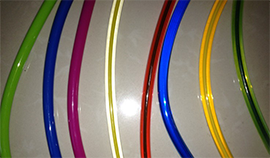
Rail Saver

If you want to protect the rails of your board when you fall off, you’ll definitely want to buy a leash with a rail saver!
A rail saver is the wide strap fabric at the very end of your leash that attaches it to the board. A great rail saver will provide a solid connection while protecting the rail from the cord of the leash.
If you have more fabric that stretches longer down the cord, you’ll have more protection.
That protection comes at a price though, as longer rail savers create more drag. Like all features of the leash, it’s all a matter of preference and sacrifice.
You can decide whether you want to prioritize rail protection or minimize drag.
Length
We talked a bit about length in the beginning, but we want to stress again how important length is!
Ranging from tiny 4-foot leashes to monster 12-foot leashes for the longest longboards, the leash you choose ultimately depends on the board you’re riding and your skill level.
No matter what, you’ll always want your leash to either be the same size or longer than the board you’re riding.
Most beginner surfers will want to start with a least at least 1-foot longer than their board so it doesn’t whip back at them in the event of a wipeout.
Just know that if you pick a longer leash, you will have more drag that will slow you down.

Ankle or Calf Leash?
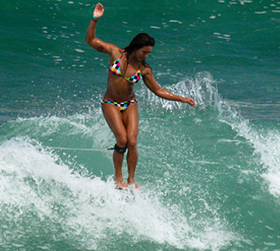
Lastly, and what many surfers don’t know, is that you can decide between the popular ankle leash or less popular calf leash.
There are pros and cons to both of these. Ankle leashes are used most often because they are very comfortable to wear (especially when paddling out), and offer ease of board retraction when you wipeout.
The seemingly obvious con is that they can get tangled up pretty easily. Calf leashes are far more common in the realm of long boarders and stand up paddle boarders.
Because it is further up on the leg, riders can walk and maneuver along their board without fear of entanglement.
The issue is that they aren’t very comfortable and if you lose your board, it is much harder to pull it back with your knee.
How To Install A Surfboard Leash
Though it may not be total rocket science, you would be surprised to know that attaching your leash might not be as simple as you think if you’ve never done it before.
tying the leash string
The first thing you’ll want to do is tie the leash string. There are many different knots such that are fairly easy to tie even if you’ve never mastered them in boy scouts. Trust, there are no Gordian Knots here. For the majority of people, they will either tie a sewn loop that goes through the Velcro or they will just latch the Velcro over the loop.
Either works just as well. The first thing you’ll want to do is tie the ends of the string together so they create a loop. Make sure enough room is at the end so you can eventually pass the cord through. You’ll want to make sure that if you are tying the sewn loop that it is not placed under the Velcro strap. This can be very uncomfortable.
Secondly, you need to attach this thing to your board to get riding. When you have the knot tied securely, fish it through the plug on the topside of your board so that the loop end is facing out.
You can then proceed to take the strap end and fish it through that loop as if you were creating a tight knot around the plug. Now pull!
As long as it is tight and doesn’t come off of your board, you are ready to go!
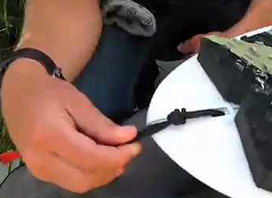
Loop Length
The one thing you’ll want to make sure to keep in mind throughout this process is that you don’t want to make your loop too big.
The bigger it is, the bigger the chance of you damaging the rails of your board.
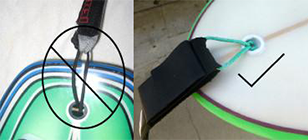
Frequently Asked Questions
Are there any cons to having a surf leash?
As much as we know about how a surf leash provides safety to surfers, we don’t ever think about the dangers that a surfer may face because of his or her leash. In many ways, surfers have grown dependent on their leashes to keep them safe in the ocean. They feel that the leash is the thing that ultimately provides them security when out on the water. What happens when your leash finally gives in and snaps, leaving you stranded in deep water and you’ve never had that experience before?
Secondly, they can very easily become tangled when you’re riding. Though it is pretty uncommon for a surfer to get wrapped up in their own leash, it does happen and it can be dangerous. If you do have a leash, know that you will want to constantly check your feet to make sure you’re free.
Lastly, leashes can sometimes get tangled up in the reef or other underwater plants and formations even if you think you’re being careful. Luckily, most high-end leashes have quick release systems that make it easy to get out of if necessary. Just know that the positives far outweigh the negatives in terms of having a leash for your board.
What are some of the top reasons you should purchase a surfboard leash?
- Whether it is a strong rip current or a fast set of heavy hitting waves, at one point in your surfing career Mother Nature is bound to take you down. Whenever something like this happens, it’s great to have a leash so that you can take time to cool it on your board while you figure out how to get back to shore
- A surfboard leash not only provides safety for you, but also safety for the others around you. If you’re a newbie surfer at a crowded spot, you’re likely to slip off your board while out in the waves. The last thing you want is for your board to fly out from under you and nail a grouchy local or a little kid in the head. That can be surprisingly dangerous.
- Having a leash will also help you to stay out in the water for a longer time than if you didn’t have one. Think of all the times you’d have to swim back to your board after you lost it if it wasn’t attached to you. That can be insanely tiring and could easily have you totally out of the game in an hour of being out.
- Lastly, in the case that you need to dive under the water for a set of massive waves. Having a leash attached to you allows you get under a wave as deep as possible without losing your board.
All this talk about leashes creating drag. What is “Drag”?
Drag is essentially the sensation of deadweight in the water behind you when you are surfing. It is something that moves with the speed of your board. The faster your board is moving, the more drag you are creating. You can test this drag by attaching it to your board in a swimming pool and letting it float in the water behind the board as you push it around. When you’re moving in bigger waves it is not a huge deal. It’s more or less an issue when you are lifting out of the waves. Regardless, that drag is a con that is far outweighed by the pros of the leash.
How can I keep my leash from getting tangled and knotted?
Every surfer has been it that situation where they are paddling out to a giant wave, only to find that their leash is tangled tightly around their ankles, completely stopping them from standing up. There are many ways you can avoid this surfing horror
Most surfers tend to wrap their leashes around their boards like they would wrap their ear buds around their smartphones. It seems like it would be the most practical way to carry around your leash. Unfortunately, this is the kind of thing that will leave tons of kinks in the cord. Whether or not you believe it, your cord is made from a material that memorizes impressions. If it is constantly wrapped around you board, it will remain wrapped up even when you take it off. Your best bet is to carry your leash freely to keep it nice and kink-free.
If you do find that the leash has kinks in it, tie it around a steady object and give it some slow, heavy tugs. Once you’ve straightened it out a bit, hang it freely so that it retains that desired shape.
Lastly, though it might seem like an obvious no-no, there are many new surfers who will tie the leash around their leading foot. This is just adding extra, unnecessary tension to your leash and most likely making it more difficult for you to surf.
How do I wear my surfboard leash?
As was mentioned in the previous question, you’ll want to wear the leash on your back ankle or ankle closest to the tail of your board.
Firstly, before strapping in, you’ll want to make sure that there are no tangles in the cord. This will be difficult to fix once your leash is strapped. It also leaves the leash more prone to breakage if left unfixed.
Secondly, you’ll want to strap the leash as close to the top of your foot as possible. If you strap it too high on your ankle it will slide and spin around. If you can move and spin the leash around your ankle, it needs to be tighter.
Make sure that when you strap it, both ends of the Velcro are running perfectly parallel to each other to ensure the best grip.
Lastly, and probably most important, fasten it so that the cord is poking out the backside of your ankle away from your other foot. This will ensure that you’re not tripping on the cord while riding.
What color leash should I buy?
This isn’t the biggest deal in the world, but from experience, a leash that is clear or has transparent qualities will stay looking much better over the course of its lifetime. Black or matte color leashes build up wax surprisingly quick and will begin to look gunky after the first few rides.
Are competition leashes that much different than regular leashes?
Competition leashes are a lot thinner than regular leashes and are best suited for those who are experienced in the water and don’t want to have any drag behind them. If you are a surfer that’s landing tricks out on a short board in head high waves, a competition leash is great. If you’re a beginner chillin’ on an 8-footer or bigger, get yourself a regular leash.

